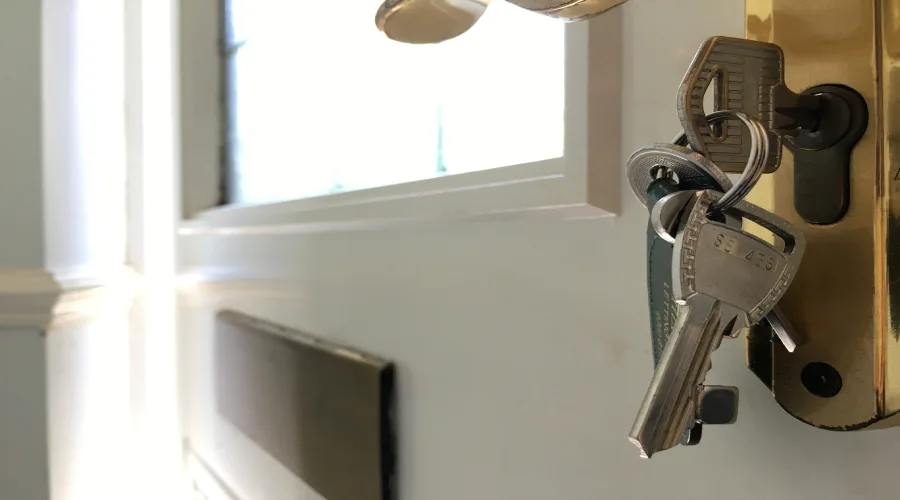You're late to work and you're trying to organize everything in an incredibly short time. With your hands full you swiftly insert your key into the lock of your front door and turn it around - but you don't feel the fluid motion. Instead, you hear a snapping sound. When you look down, realize that the key to your home has snapped out from the locking. What a way to begin your day.
The possibility of a key breaking inside the lock can be an inconvenience and a hassle.
Locks Repair Brampton can save you from this hassle.
Why Do Keys Break Inside Locks?
There are several factors that can trigger this issue.
Keys that are standard in design are made from somewhat soft metals, such as nickel and brass.
The key is damaged due to wear and tear as it ages.
The lock itself isn't sufficiently lubricated or is been jammed.
Materials That May Come In Handy
In a stressful situation, it is often difficult to assess the items we carry around in our possession. When you read about matches or thin metal you can imagine that extrapolating similar items can be difficult. This is why we have compiled a list of things you might be carrying around your body, or in your surroundings that can help you remove your key from the lock.
• Metal hair clip
• Bobby pin
• Paper clip
• Safety pin
• Button pin
• First aid kit
• Kits for emergencies
• Swiss army knife
• Playing cards
• Pocket knife
• Eyebrow scissors
• Pins that roll Pin

Utilize A Glue Stick - The Internet Hack That Actually Works
There's been plenty of chatter on the internet under the name "life hacks" which make use of the glue stick of the glue gun to fix the broken key, such as the glue sticks available at Amazon.
We wanted to try it out, and it has proven to be effective!
The goal is that you soften the edge of the stick with glue, and then insert it in the hole of your key. If the glue is soft enough to allow it to conform to the key, and later it hardens around the key, or on the damaged edges of the metal, it could be pulled out.
It's possible to do it successfully but it's definitely not something that slams dunks like the videos on the internet demonstrate. We were able to get it working however we found a few issues during the process.
Depending on the manner in which the key has been broken There may not be a sharp metallic edge to allow the glue to keep the blade of the key in the process of extraction. What we found is that the force required to remove the glue stick from the flat side of the cylinder for the key also causes the glue stick to break away from the edge of the key.
For this cut the glue stick's edge until it is a point, then put it in the hole in which you want to insert it.
The glue stick must be moved slowly from side to side so that it is broken off from the cylinder's face on both sides of the keyhole, before pulling the stick. This allows for an easier pull so that the glue stick remains at the edge of the key.
• After a couple of attempts, the glue stick was able to pull it out barely, but it was enough that I was able to make use of needle nose pliers to grasp it and lift it out.
The Lock Should Be Flushed With A Spray Of Lubricant
The straw attachment should be placed on the sprayer. The attached straw into the door of the lock.
Pick the silicone spray. Silicone lubricant can help the key slide off easily and, since it's waterproof, it will assist to shield your lock from corrosion.
You could also make use of graphite powder. It could help in lubricating without clogging the lock.
Make Sure The Cylinder Is Aligned
The cylinder must be locked or unlocked state to be able to remove the key from the lock. If you attempt to remove any key when it is in between states, it will remain within the lock.
Make use of needle nose pliers to get inside the cylinder. The cylinder should be turned till the lock is closed or unlocked.

Ice Is The Key
If your key is unable to move Did you know you can utilize the ice method as a second option for getting rid of your key? It's a quick and affordable solution. The freezing temperature of ice causes the metal to contract by putting it on the key will result in it shrinking and permitting it to slip more easily off the lock.
It is suggested to do this by wrapping an ice cube in a towel to stop drips and applying it to the key's head. Make sure to hold it in place for a while before trying to take off the broken key by gently shaking it depending on the need. It is important to keep the fact that this technique is not as efficient in colder temperatures.
Clean The Locking
If these methods have worked, you need to ensure that you keep your lock clean often. Locks are often soiled with dirt or other debris that has been accumulating over time and should be cleaned regularly, as it can hinder their functioning. However, it's easy to fix,
Locksmith Toronto could also serve as a cleaner in this situation and also grease a damaged key. Apply the formula quickly to the keyhole and key and then insert the key back in several times to push it into the lock. Keep an unclean ring handy to capture any drips.
If none of the previous methods worked, you could be dealing with a problem that requires resolving. It is important to not create more problems and the most effective option at this point is to contact a professional for help and to avoid damaging the lock by doing it yourself.